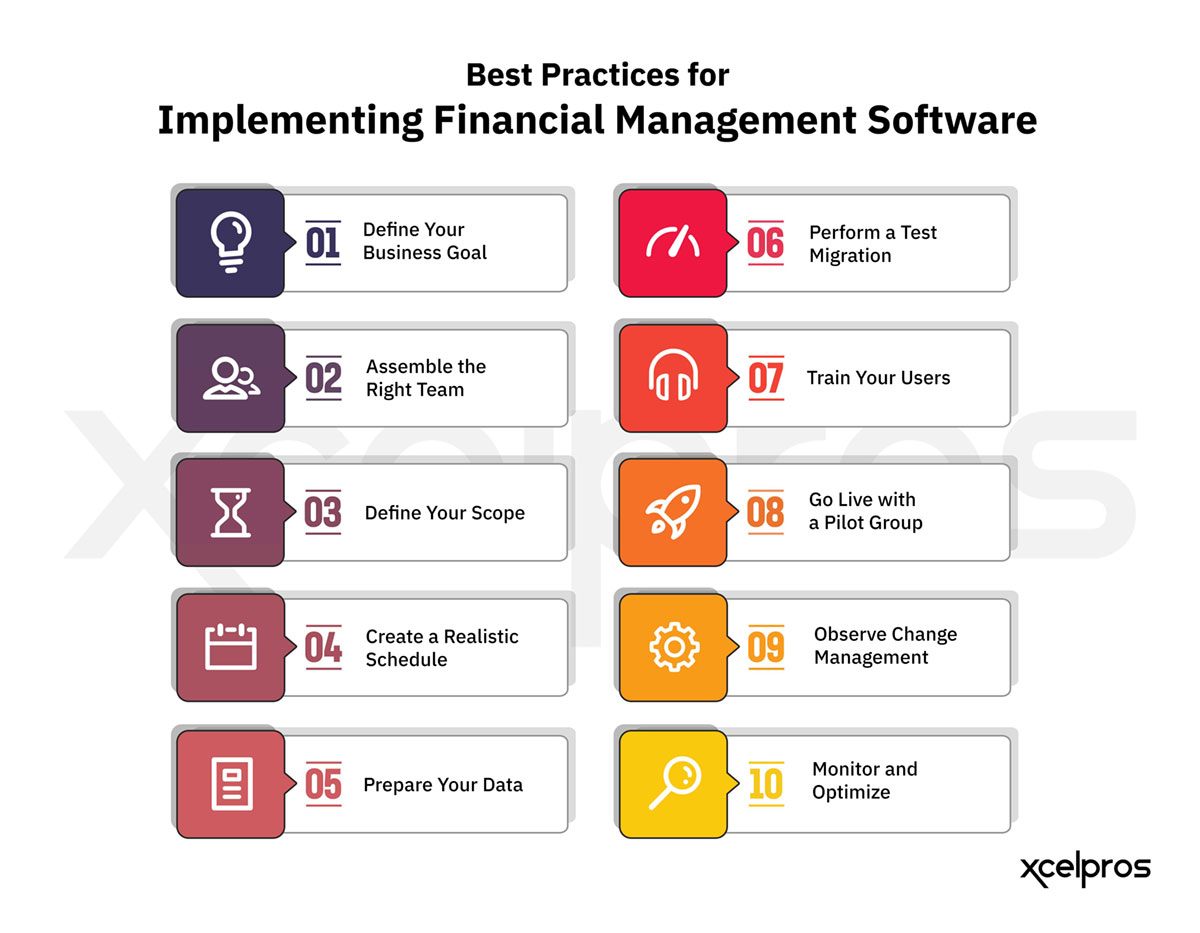Best practice, better D365 results
Are you ready to take your business to the next level with Microsoft Dynamics 365 Finance and Operations (F&O) software? Implementing any new system can be daunting, but it doesn’t have to be.
Working with a partner that understands implementation best practices will simplify the process and give you the best possible results.
- Tailored Solutions: Experienced implementation partners help tailor software to meet unique business needs. Because they understand the software’s capabilities, they can guide you in configuring and customizing the software to meet your specific requirements.
- Risk Mitigation: Implementing complex software like MSD365 finance and operations involves a certain level of risk. An experienced implementation partner can help you identify potential risks and provide strategies to mitigate them. This can help you avoid potential roadblocks and ensure a smoother implementation process.
- Best Practices: An experienced implementation partner understands the best practices for implementing D365 finance and operations software. They can guide project management, change management, and training, helping ensure your team is prepared for the changes and new processes the software will introduce.
- Ongoing Support: Implementing D365 finance and operations software is not a one-time event. Your business will likely need ongoing support and maintenance to keep the software running smoothly. An experienced implementation partner will provide ongoing support, including troubleshooting, training, and maintenance to ensure your software always performs optimally.
A partner that understands implementation best practices will make the process easy and give you the results you are looking for. With that in mind, here are 10 best practices to follow when you begin your implementation project.
Figure 1:Best Practices for Implementing Dynamics 365 F&O Software

Define the business problem that you want to solve
To get the most out of D365, the first step is pinpointing the issues at hand to determine if a system like Dynamics 365 can help. Obtaining opinions of key stakeholders from all areas of your business such as finance, sales, operations, and IT is a great way to discover underlying difficulties and highlight job functions that need optimization.
At the same time, you should create a record detailing the problem, expected outcomes, and any other pertinent facts to be used as a reference throughout the deployment. It’s virtually impossible to determine whether a project is successful or not without first defining the project’s purpose.
Assemble the right team
To guarantee a successful implementation, you will want to assemble an experienced team comprised of individuals from every part of the business the implementation affects. These users should possess sufficient experience, such as project managers, software developers, and consultants to help strategize, plan, and deploy the project.
Having some knowledge of Microsoft D365 is beneficial, but the best option is working with an experienced implementation partner.
Putting together the right team guarantees the implementation process will be completed effectively and reduces the chance of delay, helping ensure the project moves on schedule.
Define your scope
Start by outlining the goals of your project in order of importance. You’ll want to look for any similarities between these objectives and note the hazards associated with them. This approach lets you create a timeline that considers not just individual assignments, but also the big picture.
Once the scope is set, define how every component will coordinate with planning efforts. This assessment will help identify any missing pieces of the current design and reveal the best approach for implementation. During this phase, user experience is a priority.
Create a realistic schedule
When implementing Dynamics 365, one of the most important steps is creating a realistic schedule. The timeline should be agreed upon by all stakeholders before the implementation process begins. This will ensure that everyone involved understands the timeline and what is expected of them for the project.
The schedule should include detailed tasks, assigned resources, deadlines, and any dependencies to take into consideration. It is important to set realistic deadlines, because rushing through an implementation result in costly mistakes. At the same time, it is also important to consider how the different stages of the project might overlap or impact each other.
To ensure your project timeline is feasible, break it down into smaller phases. This will help manage each phase efficiently, adjust if problems arise, and account for unexpected delays or issues. It’s also important to communicate the timeline and keep stakeholders informed about progress throughout the process.
Prepare your data
When you start getting ready to implement D365, you’ll want to ensure that your data is organized, complete, and up to date. This will help make sure you have a successful implementation and avoid issues during the transition process.
Before you begin the implementation process, identify any gaps or inconsistencies in the data. This way, you will be able to address them before they become an issue. It is also important to consider any regulatory or compliance standards that need to be met.
Perform a test migration
Before going live with D365, perform a test migration. This will help you ensure that all data is transferred accurately and that all customizations function properly.
To begin the test migration process, select a small sample of data to transfer. Test the entire migration process with the small sample first so you can make any necessary changes or adjustments before migrating your entire database.
Your partner can help set up a sandbox environment for testing purposes. This is the best way to safely move data into D365 without disrupting your existing system. It is important to remember that the sandbox should be regularly refreshed so you can continue to test new configurations and scenarios.
Make sure to test at each step of the process to confirm that all data is migrating correctly. Give yourself time to double-check customizations and configurations, ensuring they are all working as expected.
Train your users
Training users is another essential part of a successful implementation. With proper training, users will use the system correctly, and your project will be a success. Here are some tips for training users:
- Create a training plan: Create a detailed plan that outlines what types of training your users will receive, who is responsible for each part of the training, and how long the training will take.
- Consider user experience: It is important to consider the user experience when designing your training program. Be sure that users are comfortable with the system and understand how to use it efficiently.
- Provide hands-on training: Give users a chance to try the system themselves before you go live. This will help them understand the features and functions of Dynamics 365 F&O better and allow them to ask questions and provide feedback.
- Use multiple training methods: Different people learn different ways, so it is important that multiple training methods are provided. You can provide online videos, in-person training, webinars, one-on-one sessions, written materials, and more.
- Track and measure user progress: Tracking user progress during the training process measures your users understanding of the system before they go live. When you know all users have received adequate training, you should be ready to use Dynamics 365 F&O successfully.
Go live with a pilot group
Once your implementation is complete, it’s time to go live. Starting with a pilot group provides the opportunity to test the system on a small group before it goes live to everyone in the organization. It’s always best to start with a limited group of users and expand as needed.
When selecting the pilot group, consider users with distinct roles and levels of expertise. If the system is not working properly, you can identify any areas where additional training may be needed. Additionally, you’ll want to plan for changes based on feedback received during the pilot phase.
Be sure to communicate with your pilot group throughout the process. Provide clear instructions on how to use the system and answer any questions they have. Once the pilot group has successfully used the system, you can confidently roll it out to the rest of the organization.
Change management
Managing change is an essential part of any implementation. Changes can happen both during the implementation process and after the system is live, so it’s important to have a plan in place that lets you manage changes efficiently.
Organization is a must. Document all changes made during implementation, such as data migration, system configuration, and user training. Staying organized will help you identify where changes have been made and ensure that all updates are tracked.
Once your system is live, establish a change management policy and process. Assign responsibility for managing changes, identifying changes that need approval, and setting a time-frame for when changes should occur. Creating a formal process for tracking and approving changes before they are implemented is also a good idea. A formal process can ensure changes are documented and that everyone involved knows them.
Monitor and optimize
Once your new system is up and running, monitoring and optimizing performance is an ongoing process. It will help you get the most out of your implementation and confirm that the system runs as efficiently as possible. Monitoring and optimizing involves reviewing your system’s data, processes, and workflow.
For example, look for inefficiencies in your data entry processes or identify instances where manual processes can be replaced with automated solutions. Additionally, be sure to regularly evaluate system usage metrics to guarantee users make the most of their available features.
If necessary, upgrade your server infrastructure or reconfigure your system settings to optimize performance. It is also important to stay on top of Microsoft updates as they are released. These can fix bugs and improve performance to strengthen your system.
Final Thoughts on Implementing MSD365
Following best practices for implementing D365 is essential to successfully meet your company’s needs.
Working with an experienced partner who understands these best practices is crucial. An experienced partner will guide project planning, change management, customizations, and ongoing support, helping you simplify the implementation process and achieve a better outcome.
XcelPros can help you navigate the complex process of implementing Microsoft Dynamics 365. Our team has extensive D365 implementation experience within various industries. We will work with you to define your business requirements, develop a project plan, and provide ongoing support to confirm that your software will continue to meet your evolving needs.
XcelPros also provides expert advice on customizing and configuring your software so it is optimized for your unique business needs. This way, you get the full potential of D365, driving profitability for your company.







